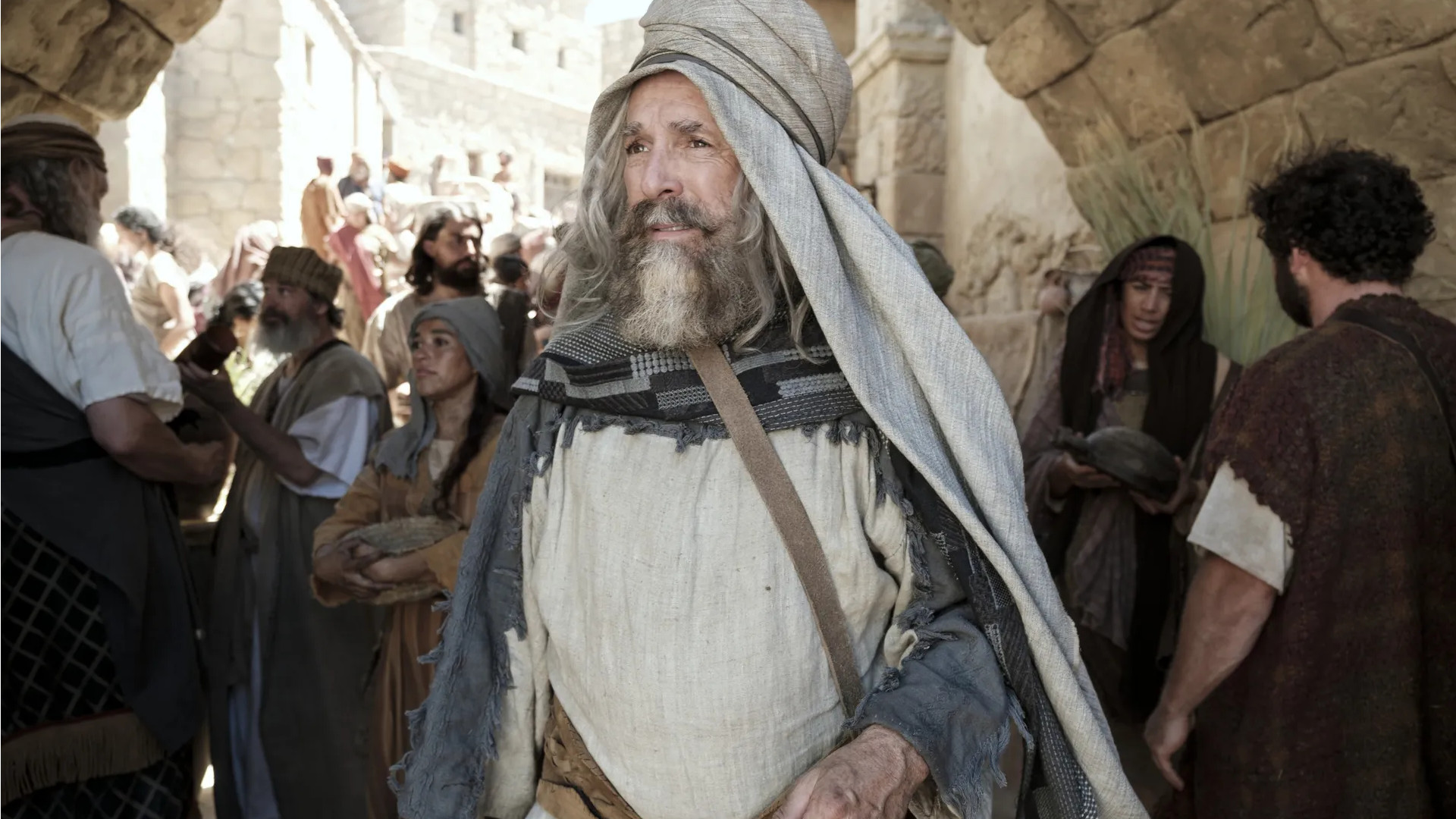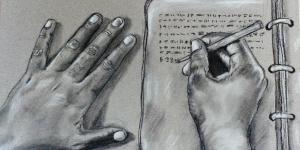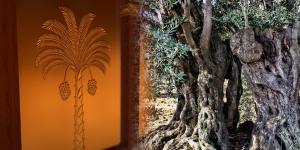You are here
Why Did Lehi Live in Jerusalem?

1 Nephi 1:4
The Know
In the opening verses of the Book of Mormon, Nephi introduces his father, Lehi, a prophet who “dwelt at Jerusalem in all his days” (1 Nephi 1:4). Later, readers learn that Lehi was a descendant of Joseph through Manasseh, as was Laban, who kept “the record of the Jews” on the plates of brass.1 Some evidence also indicates that the lost manuscript identified Ishmael as a descendant of Joseph through Ephraim.2 Since Jerusalem was the capital of the southern Kingdom of Judah, it might seem unusual that nearly all the residents of Jerusalem named in these opening accounts are from one of the lost northern tribes of Israel. In the 1830s, a critic of the Book of Mormon regarded this as a “foolish blunder” that exposed its authors as “ignorant fellows.”3
In recent decades, however, archaeological evidence has convinced most scholars that many residents of Jerusalem—perhaps even a majority of them—in the seventh century BC were descendants of refugees from Northern Israel.4 Archaeological excavations in and around Jerusalem indicate that the population of the city and surrounding region surged in the late eighth century BC and that the walls were expanded to accommodate this rapid population growth.5 According to Margreet Steiner, Jerusalem had become “what geographers call a ‘primate city,’ a city that not only surpasses all other settlements in size, but where all economic, political, and social power is concentrated as well.”6
While the reasons for this population growth were complex and multifaceted, Northern Israelite refugees coming into the area around Jerusalem were likely a major contributing factor. Archaeologist Yigal Shiloh noted, “It seems that refugees flocked to Jerusalem from Samaria and the surrounding countryside, which was conquered by the Assyrians in 722 BCE.”7 The full extent of Jerusalem’s population growth at this time and how much of it was due to an influx of Northern Israelite refugees remain topics of ongoing inquiry and some debate among archaeologists, historians, and biblical scholars.8 Yet while “a complex array of conditions” no doubt contributed to “the observed urban growth” of Jerusalem, most scholars agree that “in the aftermath of the Assyrian campaign, some of the inhabitants of the kingdom of Israel and the Shephelah region immigrated to the kingdom of Judah.”9 One estimate suggests as much as 53 percent of Jerusalem’s population may have been of Northern Israelite origin after 720 BC.10
At least some of these northerners were elites and craftsmen who could read and write and may have even brought records with them.11 “Both written texts and oral traditions were probably brought to Judah by Israelite refugees after the fall of Israel,” according to Israeli archaeologist Israel Finkelstein.12 Biblical scholar William Schniedewind has noted, “A disproportionate number of the refugees would have been the social and cultural elites: nobles, government officials, scribes, craftsmen, temple priests” who “could be put to work in the burgeoning government bureaucracy.”13
Excavations in the main region where these refugees initially resettled reveal that by the seventh century BC it had become a wealthy neighborhood,14 and the discovery of numerous seals from the same time period suggests that descendants of these refugees were indeed integrated into the upper echelons of Judahite society and government.15 King Hezekiah in Jerusalem may have even chosen the name Manasseh for his son as a way to build unity with the people of northern descent.16
The Why
This growing body of archaeological evidence creates a picture remarkably consistent with the opening scenes of the Book of Mormon, in which readers meet Lehi, a descendant of Joseph from the tribe of Manasseh and one who had gold, silver, and many precious things in the “land of his inheritance” (1 Nephi 2:4; 3:22) and who also may have been a skilled craftsman.17 A few chapters later, readers are introduced to Laban, Lehi’s kinsman from the lineage of Joseph who may have been the “commander of the fortress” in Jerusalem and whose “fathers had kept the records” on the plates of brass (1 Nephi 5:16).18 All this also provides contextual details that explain why Lehi’s family, as descendants of Joseph, lived in Jerusalem at the end of the seventh century BC. Latter-day Saint archaeologist Jeffrey R. Chadwick summarized:
Since his tribal heritage was Manasseh, but he had “dwelt at Jerusalem in all his days” (1 Nephi 1:4), Lehi was probably a descendant of Manassite refugees who had fled south to Judah with others of the northern kingdom when the Assyrians attacked, destroyed, and deported Israel in 724–722 BC.19
Chadwick further notes that if Lehi’s ancestors had settled outside of Jerusalem or elsewhere in the lands of Judah, they likely would have been caught up in the destruction and deportation of Judah by the Assyrian army in 701 BC. But around 705 BC, Hezekiah had expanded Jerusalem’s walls and fortifications to include the area settled by the northern refugees, thereby ensuring they were protected when the Assyrians invaded. “Protected by Jerusalem’s [new] wall, Lehi’s great-grandparents and their fellow Jerusalemites were not deported by the Assyrians in Sennacherib’s 701 BC attack on Judah. While the rest of Judah was thoroughly destroyed … Lehi’s ancestors were spared to live on, resulting in Lehi’s eventual birth in Jerusalem.”20
The presence of these refugees is only hinted at in the Bible.21 The full picture and the understanding of how closely it all accords with the details in the opening chapters of the Book of Mormon have only come to light within the last forty years—much too late for Joseph Smith or any other writer in the 1820s to draw upon in creating a plausible historical narrative coming out of Jerusalem around 600 BC.
Being aware of this background not only strengthens the historical plausibility of the opening account of Lehi and his family but also deepens our appreciation for the Providential guidance that led Lehi’s ancestors and other northern refugees to Jerusalem, Hezekiah’s inspired preparations and leadership at the time of the Assyrian assault, and the Lord’s divine protection of Jerusalem in 701 BC (see 2 Kings 19). Without these events, the inspired Book of Mormon record may not exist today since they enabled Lehi’s ancestors to survive and thus led to the eventual birth of Lehi, the instigator and first prophet of the Book of Mormon.
Ironically, only a few generations later the same divine hand that had led Lehi’s forbearers to the safety of Jerusalem’s walls then led Lehi to safety away from Jerusalem, thereby allowing him to survive the invasion of the Babylonian army and establish a righteous branch of Israel in a new land of promise. Thus, the legacy of these faithful descendants of Joseph, preserved through Providential migrations, still speaks today throughout the world by means of the Book of Mormon.
Further Reading
Jeffrey R. Chadwick, “Lehi’s House at Jerusalem and the Land of His Inheritance,” in Glimpses of Lehi’s Jerusalem, ed. John W. Welch, David Rolph Seely, and Jo Ann H. Seely (Provo, Utah: Foundation for Ancient Research and Mormon Studies, 2004), 81–130.
Evidence Central, “Book of Mormon Evidence: Descendants of Joseph,” Evidence #291 (December 27, 2021).
- 1. 1 Nephi 3:3; 5:14, 16; Alma 10:3.
- 2. Don Bradley, The Lost 116 Pages: Reconstructing the Book of Mormon’s Missing Stories (Salt Lake City, UT: Greg Kofford Books, 2019), 157–160.
- 3. Origen Bacheler, Mormonism Exposed Internally and Externally (New York, NY, 1838), 11.
- 4. See M. Broshi, “The Expansion of Jerusalem in the Reigns of Hezekiah and Manasseh,” Israel Exploration Journal 24, no. 1 (1974): 21–26.
- 5. See Yigal Shiloh, “Jerusalem: Excavation Results,” in The New Encyclopedia of Archaeological Excavations in the Holy Land, 5 vols., ed. Ephraim Stern (Jerusalem, Israel: Israel Exploration Society; Carta, 1993), 2:704–710; G. J. Wightman, The Walls of Jerusalem: From the Canaanites to the Mamluks (Sydney, AU: Meditarch, 1993), 39–64; Margreet Steiner, “Expanding Borders: The Development of Jerusalem in the Iron Age,” in Jerusalem in Ancient History and Tradition, ed. Thomas L. Thompson (New York, NY: T&T Clark International, 2003), 75–79; Hillel Geva, “Western Jerusalem at the End of the First Temple Period in Light of the Excavations in the Jewish Quarter,” in Jerusalem in Bible and Archaeology, ed. Andrew G. Vaughn and Ann E. Killebrew (Boston, MA: Brill, 2003), 183–208; Jeffrey R. Chadwick, “Jerusalem,” in Encyclopedia of the Bible and its Reception, 21 vols. (Boston, MA: De Gruyter, 2009–2024), 13:1009–1012; William G. Dever, Beyond the Texts: An Archaeological Portrait of Ancient Israel and Judah (Atlanta, GA: SBL Press, 2017), 548.
- 6. Steiner, “Expanding Borders,” 78.
- 7. Shiloh, “Jerusalem: Excavation Results,” 704. See Chadwick, “Jerusalem,” 1010: “In the decades after 735 BCE, movement of refugees into Judah from the neighboring northern Kingdom of Israel, a result of the Assyrian conquests there, led to the settling of an additional area in the location of today’s Jewish Quarter, which became called the Mišneh—a Hebrew term meaning ‘second’ or ‘additional.’”
- 8. For high and low estimates of Jerusalem’s population growth, see Avraham Faust, “The Settlement of Jerusalem’s Western Hill and the City’s Status in Iron Age II Revisited,” Zeitschrift des Deutschen Palästina-Vereins 121, no. 2 (2005): 97–118; Hillel Geva, “The Settlement on the Southwestern Hill of Jerusalem at the End of the Iron Age: A Reconstruction Based on the Archaeological Evidence,” Zeitschrift des Deutschen Palästina-Vereins 122, no. 2 (2006): 140–150. For debate over the extent to which northern refugees played a role in this population growth, see the back-and-forth between Naʾaman and Finkelstein: Nadav Naʾaman, “When and How Did Jerusalem Become a Great City? The Rise of Jerusalem as Judah’s Premier City in the Eighth–Seventh Centuries BCE,” Bulletin of the American Schools of Oriental Research 347 (2007): 21–56; Israel Finkelstein, “The Settlement History of Jerusalem in the Eighth and Seventh Centuries BC,” Revue Biblique 115, no. 4 (2008): 499–515; Nadav Naʾaman, “The Growth and Development of Judah and Jerusalem in the Eighth Century BCE: A Rejoinder,” Revue Biblique 116, no. 3 (2009): 321–335; Nadav Naʾaman, “Dismissing the Myth of a Flood of Israelite Refugees in the Late Eighth Century BCE,” Zeitschrift für die alttestamentliche Wissenschaft 126, no. 1 (2014): 1–14; Israel Finkelstein, “Migration of Israelites into Judah after 720 BCE: An Answer and an Update,” Zeitschrift für die alttestamentliche Wissenschaft 127, no. 2 (2015): 188–206. Philippe Guillaume, “Jerusalem 720–705 BCE: No Flood of Israelite Refugees,” Scandinavian Journal of the Old Testament 22, no. 2 (2008): 195–211, supports Naʾaman’s position, but it nonetheless remains a minority view among scholars.
- 9. Geva, “Western Jerusalem,” 205.
- 10. Aaron A. Burke, “An Anthropological Model for the Investigation of the Archaeology of Refugees in Iron Age Judah and Its Environs,” in Interpreting Exile: Displacement and Deportation in Biblical and Modern Contexts, ed. Brad E. Kelle, Frank Ritchel Ames, and Jacob L. Wright (Atlanta, GA: Society of Biblical Literature, 2011), 49; Aaron A. Burke, “Coping with the Effects of War: Refugees in the Levant during the Bronze and Iron Ages,” in Disaster and Relief Management in Ancient Israel, Egypt and the Ancient Near East, ed. Angelika Berlejung, Ariel Bagg, and Gunnar Lehman (Tubingen, Germany: Mohr Siebeck, 2012), 275. Compare Israel Finkelstein and Neil Asher Silberman, David and Solomon: In Search of the Bible’s Sacred Kings and the Roots of the Western Tradition (New York, NY: Free Press, 2006), 137–138: “Perhaps as much as half of the Judahite population in the late eighth to early seventh century BCE was of north Israelite origin.”
- 11. William M. Schneidewind, “Jerusalem, the Late Judahite Monarchy, and the Composition of the Biblical Texts,” in Jerusalem in Bible and Archaeology, 375–393; Gary A. Rendsburg and William M. Schniedewind, “The Siloam Tunnel Inscription: Historical and Linguistic Perspectives,” Israel Exploration Journal 60 (2010): 188–203. On bringing records, see Israel Finkelstein, The Forgotten Kingdom: The Archaeology and History of Northern Israel (Atlanta, GA: Society of Biblical Literature, 2013), 3, 65, 140–151.
- 12. Finkelstein, Forgotten Kingdom, 3.
- 13. William M. Schiedewind, How the Bible Became a Book (New York, NY: Cambridge University Press, 2004), 95.
- 14. See Shlomit Weksler-Bdolah, Alexander Onn, Shua Kisilevitz, and Brigitte Ouahnouna, “Layers of Ancient Jerusalem,” Biblical Archaeology Review 38, no. 1 (2012): 36–47, 69–70.
- 15. Anat Mendel-Geberovich, Ortal Chalaf, and Joe Uziel, “The People Behind the Stamps: A Newly Found Group of Bullae and a Seal from the City of David, Jerusalem,” Bulletin of the American Schools of Oriental Research 384 (2020): 159–182.
- 16. Itzaq Shai, “A Note on the Importance of the Name Manasseh as King of Judah,” in To Explore the Land of Canaan: Studies in Honor of Jeffrey R. Chadwick, ed. Aren M. Maeir and George A. Pierce (Boston, MA: Walter de Gruyter, 2022), 288–296.
- 17. See Neal Rappleye, “Lehi the Smelter: New Light on Lehi’s Profession,” Interpreter: A Journal of Latter-day Saint Faith and Scholarship 14 (2015): 223–225.
- 18. On Laban and the title commander of the fortress, see Book of Mormon Central, “Who Was Laban? (1 Nephi 3:3),” KnoWhy 709 (January 11, 2024); Kelly N. Schaeffer-Bullock, “Rediscovering Zoram: The Chief Naʾar of the Commander of the Fortress”(working paper, August 2023), copy in possession of Scripture Central research staff.
- 19. Jeffrey R. Chadwick, “Lehi’s House at Jerusalem and the Land of His Inheritance,” in Glimpses of Lehi’s Jerusalem, ed. John W. Welch, David Rolph Seely, and Jo Ann H. Seely (Provo, UT: Foundation for Ancient Research and Mormon Studies, 2004), 127, see also pp. 87–93.
- 20. Chadwick, “Lehi’s House at Jerusalem,” 93–105, 127.
- 21. See 2 Chronicles 30:1, 6, 11, 18, 25 and the discussion of these passages in Chadwick, “Lehi’s House at Jerusalem,” 91–93. The Bible more explicitly reports a migration of Israelites from Manasseh and Ephraim during the reign of Asa, ca. 900 BC (2 Chronicles 15:9), but this migration does not account for the Book of Mormon details as well as the later migration supported by archaeology. See Chadwick, “Lehi’s House at Jerusalem,” 87.
KnoWhy Citation
Related KnoWhys
Subscribe
Get the latest updates on Book of Mormon topics and research for free





